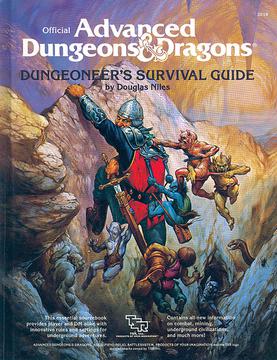"Olde School Wizardry" has been called by that title since we started playing more than eight years ago.
However, when we began thinking about sharing our rules for cooperative casting and fully customized spells (range, duration, and effect) with the broader community, I had some doubts.
By that point, I had become aware of a now-familiar movement in tabletop roleplaying games called the "OSR" (for "old school Renaissance" or "old school revival"). I appreciated the values and techniques of this philosophy, and Old School Wizardry certainly aligns with them, but the game isn't a full emulation of earlier rules sets, instead borrowing ideas from D&D, Marvel Superheroes, King Arthur Pendragon, and completely original ideas of our own.
What's more, OSR games and approaches have just as many critics as fans. Merely by having the words "olde" and "school" in the title of our game, would I be shutting some people out or turning them off before they had time to take a closer look at something very unique and special?
For a while, I flirted with calling it "The Nine Ancient Runes of Magic" for the nine different magical actions that wizards can take to initiate spells (Destroy, Enchant, Ward, etc.), but I was still attached to the original title for several very good reasons:
OLDE School Wizardry...
...the primary theme of the game's implied setting is that those in power tend to prioritize maintaining control over doing the right thing. Since the PCs are hungry, scrappy neophytes, they are immediately in conflict with the arcane powers that be for access to spells, books, artifacts, and money.
... also baked into the setting is the idea that wizards are usually petty, insecure, and arrogant. Just because the PCs are good at something doesn't mean they'll be picked for the job by prideful superiors ... they'll have to flatter and bargain. "Olde", with an "E", is pretentious and silly ... just like wizards.
... the game is influenced by Tom Moldvay's 1981 Basic Dungeons & Dragons. There are six stats, rolled in order, using 3d6. D20s are used for physical combat and spell mishaps, but not for the far more central spell casting system. A game that's four decades old *is* a bit venerable.
... all player characters are human, but there are other species in the wide world. One of these is the Auld--blessedly rare--they are as bewitchingly beautiful as they are cruel. The word "Auld" (old), though long familiar, pressed itself into my imagination after reading "Auld Lang Syne: The Story of Robert Burns" a children's book by Findon and Nasmith. Nasmith's ghostly images, spectral yet appealing, captured the feel of these otherworldly strangers.
Olde SCHOOL Wizardry...
... Of the 300+ pages of campaign material offered to the GM to take or leave as she wishes, a healthy section describes the structure and doings of The Collegium Mysterium, that most ancient school for wizards. PCs can choose which student house they are affiliated with and the GM will find plenty of plot hooks here as the young wizards try to pay off debts, return favors, or work with fellow alumni.
... as a public school teacher, I've been in institutions of learning, as a student or instructor, for over 30 years. My sense of how organizations do (or don't) work and how groups of well-educated humans behave when they take on problems has informed game mechanics for both dueling and determining a wizard's relative prestige as he competes peers for scant resources.
Olde School WIZARDRY ...
King Arthur Pendragon is one of the best RPGs ever printed. It's not because of the game's organization or choice of setting, but because it accomplishes what it sets out to do so very well: namely, to emulate at the table one very specific literary genre. Like a Zen archer, it does one task with staggering precision. That approach inspired me to make Olde School Wizardry be about one thing: inexperienced wizards battling the odds. To that end, rules and systems for things like hand-to-hand combat or climbing ropes are brief (almost perfunctory). On the other hand, within the 60 pages of basic rules, systems for composing arcane texts, seizing control of another wizard's spell, or working as a team to craft a potent Enchantment are far more developed.
So, as my friend and play tester Russ Wrightson pointed out, putting these factors together really leaves no room for Olde School Wizardry to have any other title!






























